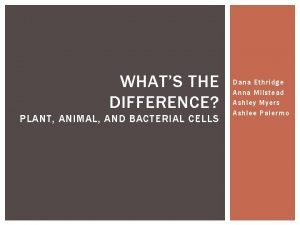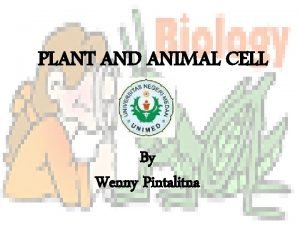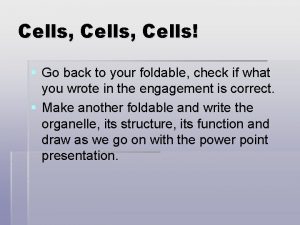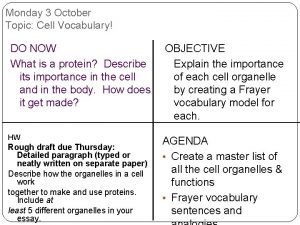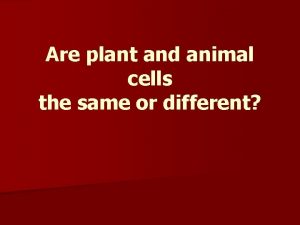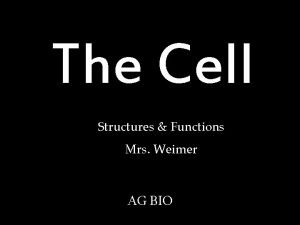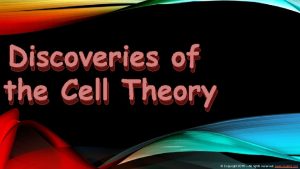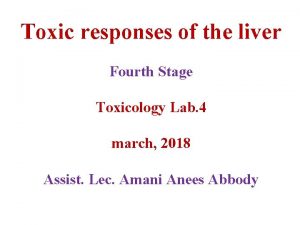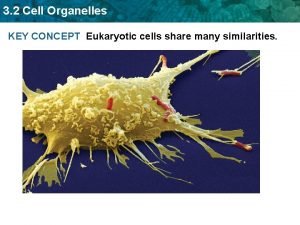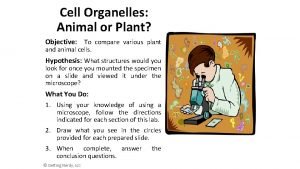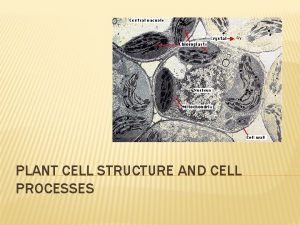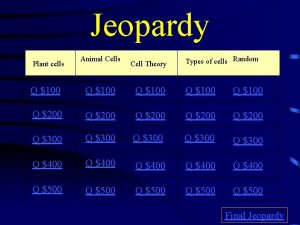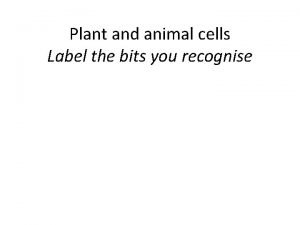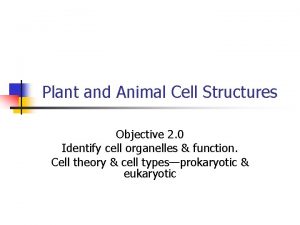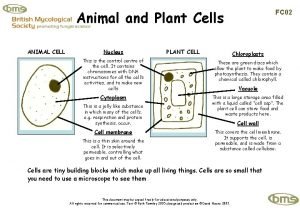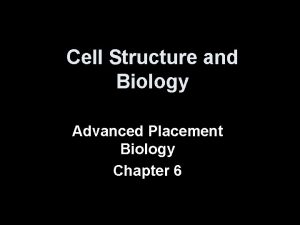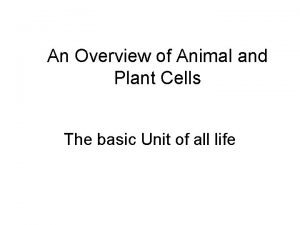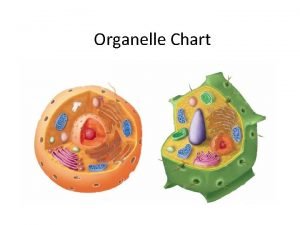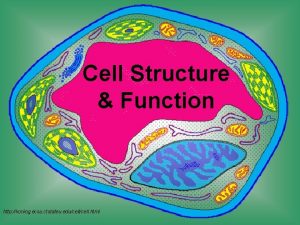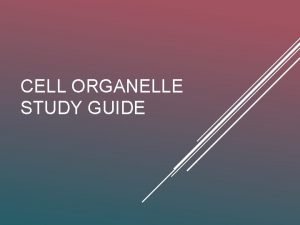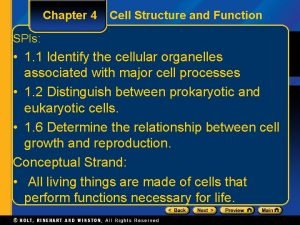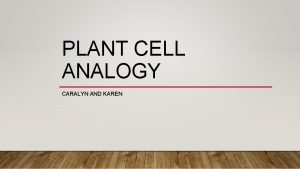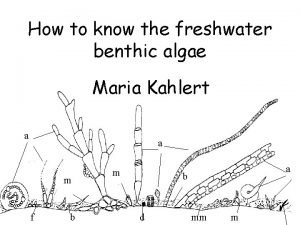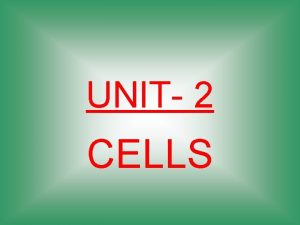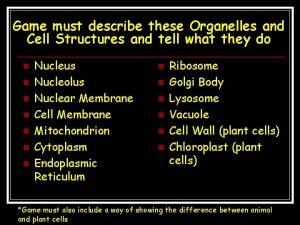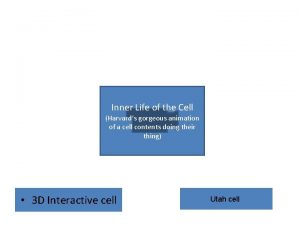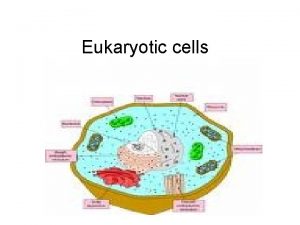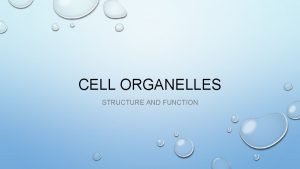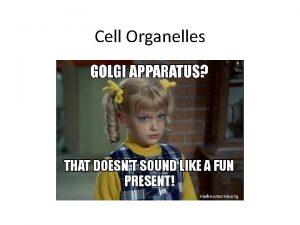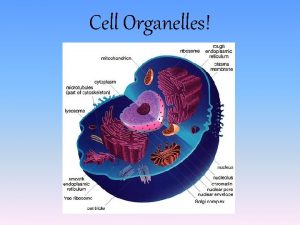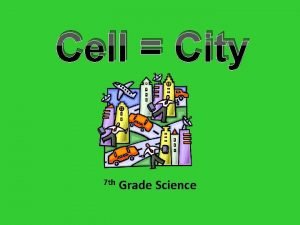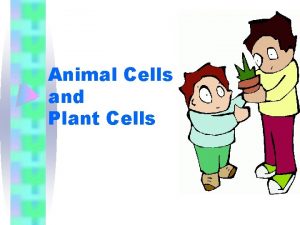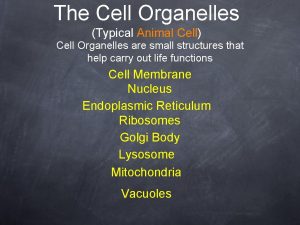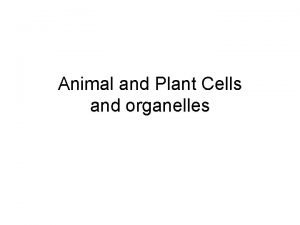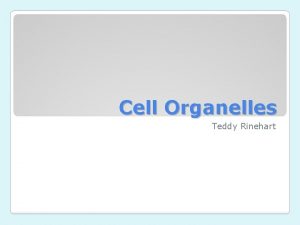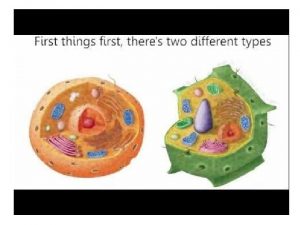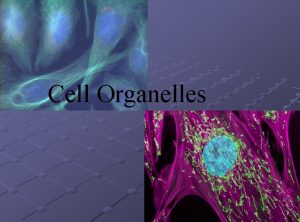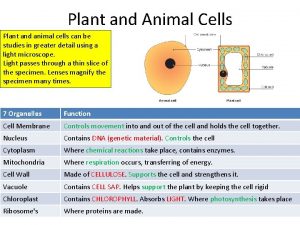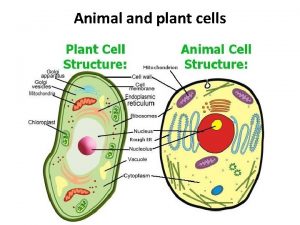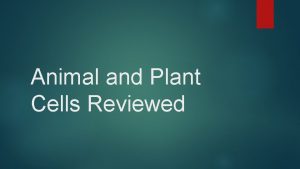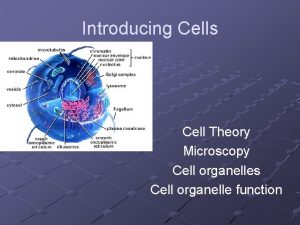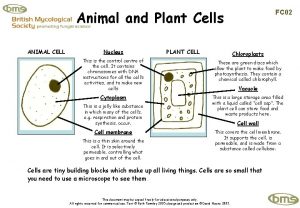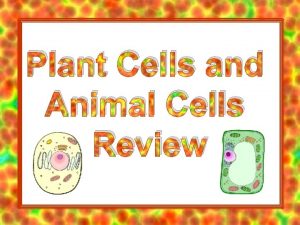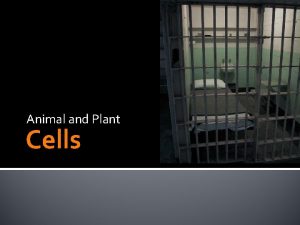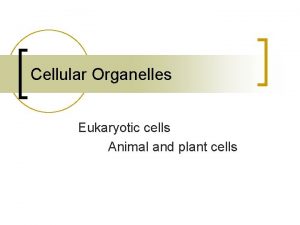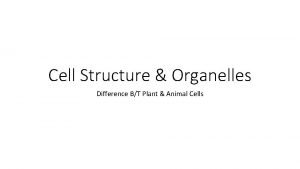Living Things Cell Theory Organelles Plant Animal Cells








































































- Slides: 72

Living Things Cell Theory Organelles Plant & Animal Cells Scientists Classification Misc. 100 100 200 200 300 300 400 400 500 500

Single-celled organisms A 100

Unicellular A 100

The process of becoming more complex A 200

Development A 200

Change in an organism’s surroundings that causes the organism to react A 300

Stimulus A 300

The most abundant chemical found inside cells A 400

Water A 400

The process of producing offspring that are similar to the parents A 500

Reproduction A 500

The basic unit of structure and function in living things B 100

Cells B 100

Cells come from other living ______. B 200

Cells B 200

The bending of light in order to increase the size of an image under the microscope B 300

Magnification B 300

All living things are composed of ______. B 400

Cells B 400

What is the total magnification of a microscope with the following lenses. 1 st = 15 x 2 nd = 20 x B 500

300 x B 500

C 100

Nucleus C 100

Organelle that turns leaves green C 200

Chloroplast C 200

Organelle that receives, sorts, and sends out packages of proteins C 300

Golgi Bodies C 300

DAILY DOUBLE C 400

C 400

Ribosomes C 400

Passageways inside the cell used for transporting proteins to the Golgi Bodies C 500

Endoplasmic Reticulum C 500

Strong, protective barrier that surrounds only plant cells D 100

Cell Wall D 100

Powerhouse of both animal and plant cells that creates energy from food molecules D 200

Mitochondria D 200

Group of cells that all work towards a specific function D 300

Tissues D 300

Genetic material found inside the nucleus D 400

Chromatin D 400

Structure that houses all of the organelles inside the cells D 500

Cytoplasm D 500

Scientist who discovered cells in animals. E 100

Schwann E 100

Carlous Linneaus developed this twonamed naming system that used what two levels of classification? E 200

Genus & Species E 200

The first scientist to name the structures he saw under the microscope as cells was… E 300

Robert Hooke E 300

Which scientist discovered that cells come from other cells? E 400

Virchow E 400

Scientists regularly use a microscope that uses a series of two lenses – one in the eyepiece and one of three objective lenses on the nosepiece. What is this type of microscope called? HINT: one lens = simple microscope E 500

Compound Microscope E 500

The process of grouping things based on similarities F 100

Classification F 100

The first word of an animal’s scientific name F 200

Genus F 200

The study of how things are classified F 300

Taxonomy F 300

The highest level of organization F 400

Domain F 400

Name the levels of classification in order from broadest to most specific F 500

Domain Kingdom Phylum Class Order Family Genus Species F 500

Organisms that can produce their own food G 100

Autotrophs G 100

Maintaining a stable internal environment G 200

Homeostasis G 200

Organisms that have a nucleus in their cells G 300

Eukaryote G 300

Domain of organisms that live in extreme environments G 400

Archaea G 400

Scientist who discovered that plants are made up of individual cells. G 500

Schleiden G 500
 Animal and plant cell venn diagram
Animal and plant cell venn diagram Plant animal cell venn diagram
Plant animal cell venn diagram Cell substance
Cell substance Plant cell organelles
Plant cell organelles Plant cell structure
Plant cell structure Plant cell vs animal cell
Plant cell vs animal cell Idealized animal cell
Idealized animal cell Animal cell and plant cell
Animal cell and plant cell Cell tissue organ organ system organism
Cell tissue organ organ system organism Ecosystem living and nonliving things
Ecosystem living and nonliving things What is the smallest living unit in the body
What is the smallest living unit in the body Plant and animal cells similarities
Plant and animal cells similarities Venn diagram of plant and animal cells
Venn diagram of plant and animal cells Plant and animal cells
Plant and animal cells How animal cells use nutrients
How animal cells use nutrients Group of multicellular oxygen producers
Group of multicellular oxygen producers Plant and animal cells foldable
Plant and animal cells foldable Plant vs animal cells
Plant vs animal cells Whats the difference between plant and animal cells
Whats the difference between plant and animal cells Different parts of the animal cell
Different parts of the animal cell Difference between plant and animal cell
Difference between plant and animal cell Cell theory contributors
Cell theory contributors Section 7-1 life is cellular answer key
Section 7-1 life is cellular answer key Life processes movement
Life processes movement Liver cells organelles
Liver cells organelles Organelles in eukaryotic cells worksheet
Organelles in eukaryotic cells worksheet Plant and animal cell objectives
Plant and animal cell objectives Structure of animal cell under electron microscope
Structure of animal cell under electron microscope Plant or animal cell
Plant or animal cell Plant and animal cell jeopardy
Plant and animal cell jeopardy Which cell is larger plant or animal
Which cell is larger plant or animal Label a plant and animal cell
Label a plant and animal cell Celula animal
Celula animal Animal or plant cell
Animal or plant cell What is the function of a cell
What is the function of a cell Label the organelles in the composite cell
Label the organelles in the composite cell Mitosis fill in the blank
Mitosis fill in the blank Plant cell
Plant cell Vacuole interesting facts
Vacuole interesting facts Cell organelles song
Cell organelles song Golgi complex function
Golgi complex function Cytoplasm
Cytoplasm What is the organelle of walls and studs
What is the organelle of walls and studs Which of the following pairs contains unrelated items?
Which of the following pairs contains unrelated items? Cell structure graphic organizer
Cell structure graphic organizer Analogy for nucleolus
Analogy for nucleolus Cell organelles
Cell organelles Organelle
Organelle What is this cell
What is this cell Plant cell
Plant cell Cell organelle game
Cell organelle game Inner life of a cell harvard
Inner life of a cell harvard The semi fluid matrix that surrounds organelles in a cell
The semi fluid matrix that surrounds organelles in a cell Golgi vesicles function in animal cell
Golgi vesicles function in animal cell 1665 hooke
1665 hooke Cell organelles review
Cell organelles review Protist cell organelles
Protist cell organelles Cell city worksheet
Cell city worksheet Cell city project animal cell
Cell city project animal cell Eukaryotic cell animal cell
Eukaryotic cell animal cell Chapter 4 cell theory and cell study
Chapter 4 cell theory and cell study Olfactory groove keros classification
Olfactory groove keros classification Medullary portion of collecting duct
Medullary portion of collecting duct Thyroid parafollicular cells
Thyroid parafollicular cells Somatic vs gamete
Somatic vs gamete Why dna is more stable than rna
Why dna is more stable than rna Chlorocruorin
Chlorocruorin Prokaryotic vs eukaryotic
Prokaryotic vs eukaryotic Prokaryotic cell
Prokaryotic cell Why did robert hooke name cells “cells”?
Why did robert hooke name cells “cells”? Masses of cells form and steal nutrients from healthy cells
Masses of cells form and steal nutrients from healthy cells Younger cells cuboidal older cells flattened
Younger cells cuboidal older cells flattened Are plant cells prokaryotic or eukaryotic
Are plant cells prokaryotic or eukaryotic











